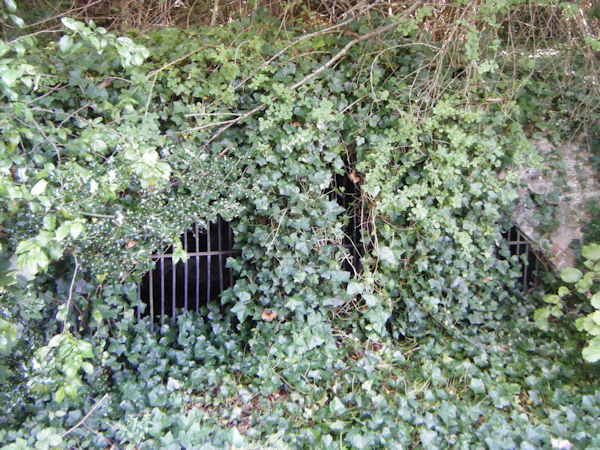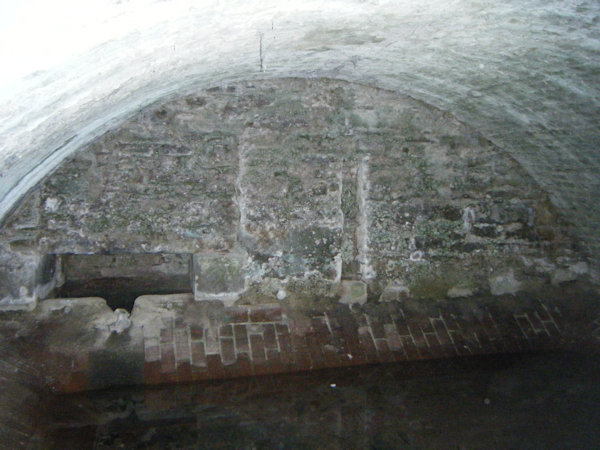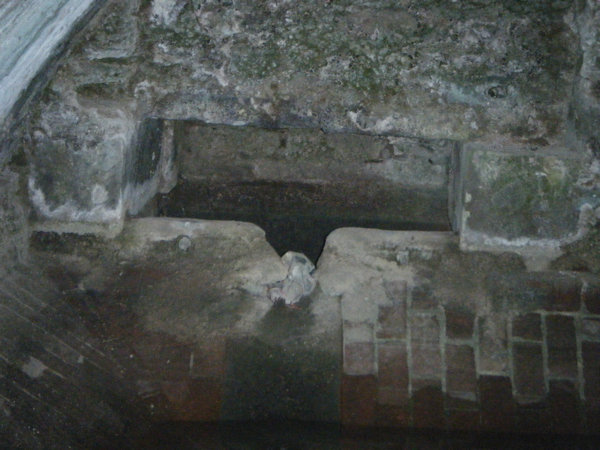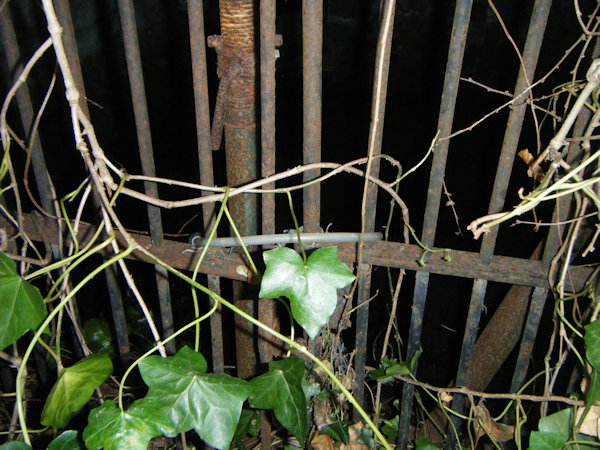 |
Dedication: Saint Edith? Location: Stoke Edith Coordinates: 52.06252N, -2.57947W Grid reference: SO603406 Heritage designation: none |
HOME - ENGLAND - HEREFORDSHIRE
 |
Dedication: Saint Edith? Location: Stoke Edith Coordinates: 52.06252N, -2.57947W Grid reference: SO603406 Heritage designation: none |
There are a number of early medieval saints with the name Edith, and, for this reason, much confusion has historically existed regarding the true identity of Stoke Edith's patron saint. The vast majority of historical sources assume that this Edith must be St Edith of Wilton, a 10th century nun, and the daughter of King Edgar, simply because she is the best known and most popular saint with that name; today, this has generally become accepted as fact. However, it has also been suggested (in particular, in 1889, in a letter written to Notes and Queries, entitled The Various St. Ediths in the Western Calendar, by "H. de B. H.") that Stoke Edith's patron may be St Edith of Polesworth, an abbess from Polesworth in Warwickshire, about whom very little is known for certain. However, neither figure was local to Stoke Edith, or is likely to have ever passed through the area, and neither of their cults were prominent in Herefordshire at any point during the medieval period. Indeed, both saints seem to have been almost completely confined to the locality of their convents, which is not surprising, given their positions as nuns, and there is nothing else that could possibly link either of them to Stoke Edith.
Of course, this confusion is not a modern issue, and there is evidence that there was even uncertainty regarding the village's patron during the medieval period. A similar situation is known to have occurred at Llandegla in Denbighshire, where the supposed patronage of the church (St Thecla of Iconium) contradicted the day of the parish wake (that of St Thecla of Wimborne, Dorset), whilst the actual patron of the church and holy well is likely to have been a completely different person. At Stoke Edith, the parish wake was originally held on, according to The Hereford Guide, published in 1806, "the Sunday succeeding the 8th of September". Although this would immediately rule out St Edith of Polesworth as a candidate, because her feast day was celebrated on the 15th of July, this almost coincides with the feast day of St Edith of Wilton, the 16th of September. It is worth noting, nonetheless, that feast days are not always solid proof of a parish's patronage, as the example of Llandegla shows.
In truth, it appears that the true Edith of Stoke Edith was not actually a saint at all. In the Domesday Book, compiled in 1086, Stoke Edith is called "Stoches", and it is recorded that the lord of the manor was, then, Ralph of Tonsy, who fought alongside William the Conqueror at the Battle of Hastings, and was rewarded with vast swathes of land in England as a result. Before the Conquest, however, in 1066, the Domesday Book asserts that the "lord of the manor" was someone called "Edith". It is highly likely that this refers to Edith of Mercia, the second wife of Harold Godwinson, who briefly reigned as queen in 1066, prior to the Conquest, when she was forced to go into hiding; this would explain why "Stoches" had made its way into the hands of Ralph of Tonsy by the time of the compilation of the Domesday Book. Stoke Edith is known to have been recorded as such as early as 1278, at least according to Arthur Bannister's Place-Names of Herefordshire (1916), but it seems very likely that this name first appeared during 1066, when Edith owned it. A large number of places across England are known as "Stoke", and they were often distinguished from each other by the name of their owners; in all likelihood, "Edith" was added to the place's name for this reason. Perhaps the appendix "Edith" was not recorded in the Domesday Book because Edith of Mercia had been one of William's enemies, which would mean that attempts were made to suppress her links to the village, possibly causing the later confusion of Edith with a saint.
Nevertheless, Stoke Edith had clearly developed a strong affinity to a "St Edith" by the late medieval period, although I have been unable to verify with certainty claims that the parish church was originally dedicated to St Edith (it now bears the patronage of St Mary). A publication from 1963, entitled A List of Inquisitions Ad Quod Damnum Preserved in the Public Record Office, makes mention of a manuscript from "2 Henry V." (1414-1415) that refers to "a chaplain in the chapel of St. Mary" at Stoke Edith, as well as a second document, from "3 Henry IV." (1401-1402), which speaks of "Roger Walters, chaplain at St. Mary's altar in the church of St. Mary, Stoke Edith". As both of these accounts are medieval, it would appear that the claim that St Mary's Church was originally dedicated to St Edith is nothing but an unevidenced local myth, most probably induced by the existence of St Edith's Well. Whether the well itself was initially a secular well named for Edith of Mercia, or whether it appeared later as part of the localised "cult" of the village's "St Edith", is unclear, but the latter is probably the most likely.
Regardless of the well's true patronage, a local legend, which may well have had its roots in medieval tradition, explaining the spring's existence had evolved by at least the late 19th century. The earliest reference that I have found to this tale dates from 1897, when the Rev. John Webb wrote of the site in the second volume of Memorials of the Civil War Between King Charles I, and the Parliament of England:
|
There was, and still is a tradition handed down from the earliest times, that, while the church was building, a pious maiden, named Edith, voluntarily brought a daily supply of water to the work from a distant brook, in which undertaking she persisted till within three days of its completion, when her strength being exhausted, she fell on her knees and intreated that the labourers might obtain a miraculous supply. A fountain immediately gushing from the earth, so runs the legendary tale, from that hour never ceased to flow, and has obtained the appellation of Saint Edith's well. |
In addition to the circulation of this legend, it was also commonly believed that St Edith's Well possessed the power to cure a large variety of ailments, and its water seems to have been used for this purpose until the mid 19th century, when the practice was forcibly stopped. In Collections Towards the History and Antiquities of the County of Hereford, written by the Rev. Morgan G. Watkins in 1897, it was noted that the villagers had used to "wash there in the hope of being cured", until "fifty years" previously, when a set of "iron bars" were installed over the front of the well by "Lady Emily Foley", who hoped to see an end to the locals bathing in the water. Watkins also described the well as an "unfailing supply of excellent water", and reported that the parish wake had been celebrated as late as "the early part of the last century" (this would be the early 1700s). During the mid 19th century, Lady Emily Foley was resident at Stoke Edith Hall, and, as the owner of St Edith's Well, clearly disliked the villagers' use of its water. As the estate remained hers until her death in 1900, it seems unlikely that the practice of bathing in the well would ever have been revived.
Perhaps the most dramatic moment in the well's history, however, occurred during the Civil War, on the 1st of May, 1644, when the Rev. John Pralph, then Vicar of Tarrington, was fatally shot in the head at the well by a group of Parliamentarians. According to W. S. Symonds' Episode of the Civil Wars, published in 1883, Pralph was "quietly walking" past St Edith's Well when he was approached by some "Roundheads", who were apparently returning to Ledbury from Hereford. It is said that, when asked "Who are you for?", Pralph unhesitatingly replied that he was "for God and the King", and was instantly shot by a soldier. The Rev. John Webb, in his aforementioned Memorials of the Civil War, also wrote of Pralph's death, and transcribed a relevent portion of the "register-books" of Tarrington Parish, part of which mentions the holy well:
|
May 3 - 1644 Burial John Praulph, Vicar. He was murdered by some of the Parliament Soldiers near the Well at Stoke Edith. |
It is particularly interesting that this register does not name St Edith's Well at all, and this could be for one of two reasons: either the well was, at this time, not known as "St Edith's", but was simply a good local water supply, or it was so well-known that it was not worth writing its full title. Either way, it is worth noting that the fact that the "Well" is afforded a capital letter is very unlikely to be of any significance, as it was common practice at the time to capitalise all nouns, regardless of their importance. If the well really was not known as "St Edith's" at this point, then it must have attained the name at some later point, most probably not during the 19th century, given Lady Foley's attitude to its existence. Although it is possible that the name became attached to the spring in the late 17th or 18th centuries, perhaps if the site was turned into some sort of folly on the estate, it seems very unlikely that this would have happened, simply because of the number of traditions associated with the site, and because of the fact that the majority of the spring's current housing, which certainly does not befit a garden folly, clearly dates from the 18th century.
When I visited St Edith's Well in the September of 2025, I found that this 18th century structure was still intact, although it is evidently beginning to crumble. The water from the spring appears to originate in a smaller, stone-lined basin (which almost certainly predates the rest of the building) at the back of the structure, before issuing into a large brick-lined pool, arched over and blocked by Lady Foley's railings, which had been secured shut with a bicycle lock at the time of my visit. The pool held what appeared to be a decent quantity of water, although it was rather shallow, and the bottom was lined with a layer of sand. Of the most interest was the back wall, which was clearly much older than the arch and large pool, and contained a mysterious niche, perhaps a metre high but only inches wide, that could once have held a statue. The side of the arch facing the road was being held up with two scaffolding poles, one of which had slipped from its position; the site is in dire need of repair, and was entirely covered in ivy when I saw it. Why exactly this gigantic cistern was built, of course, remains something of a mystery, but it was most probably constructed to supply either Stoke Edith Hall, or its extensive gardens.
 |
 |
 |
 |
|
Access: The well is located on private land, just inside the entrance to the Rectory. |
Copyright 2025 britishholywells.co.uk